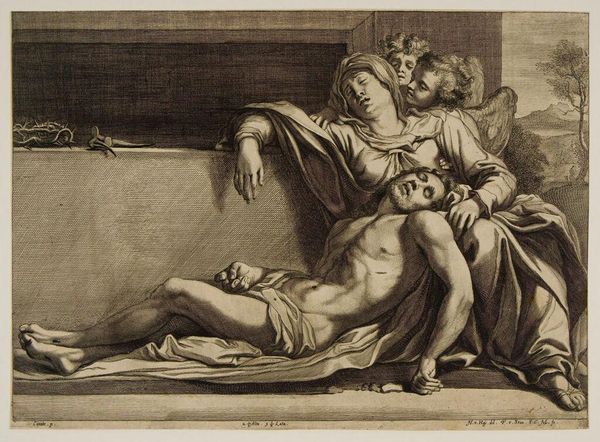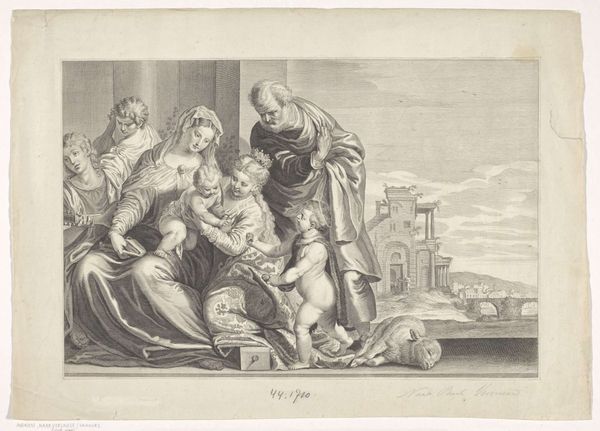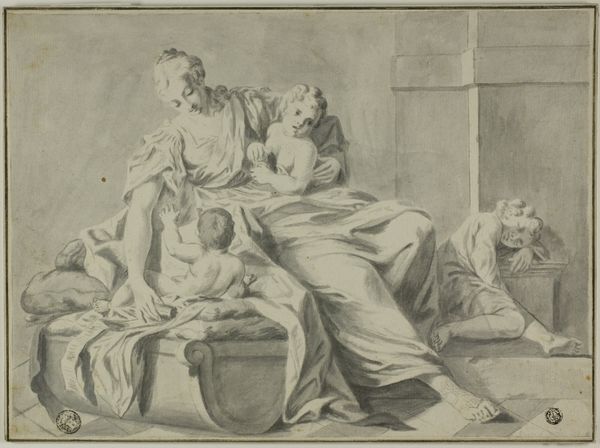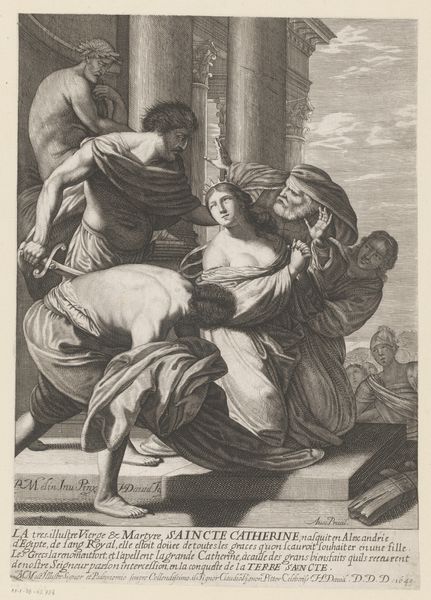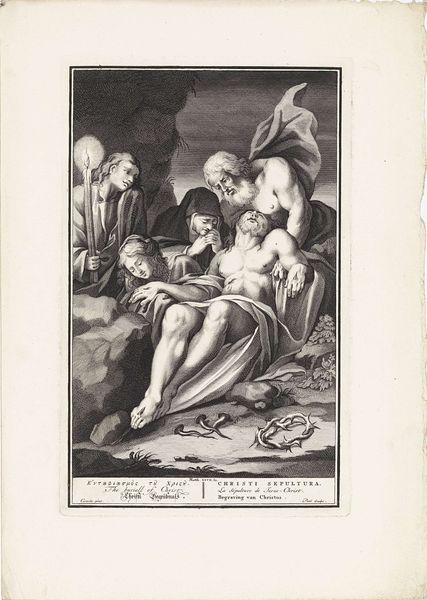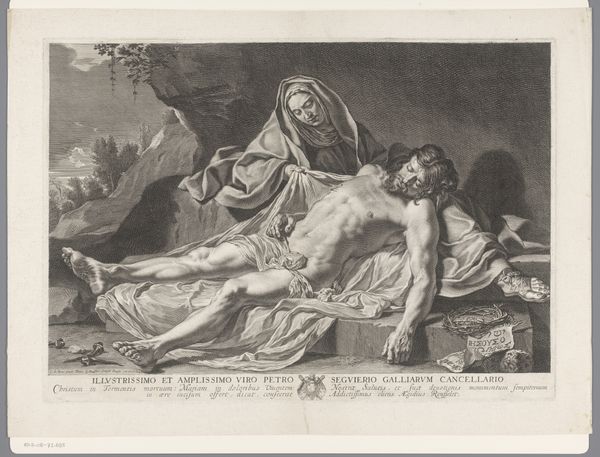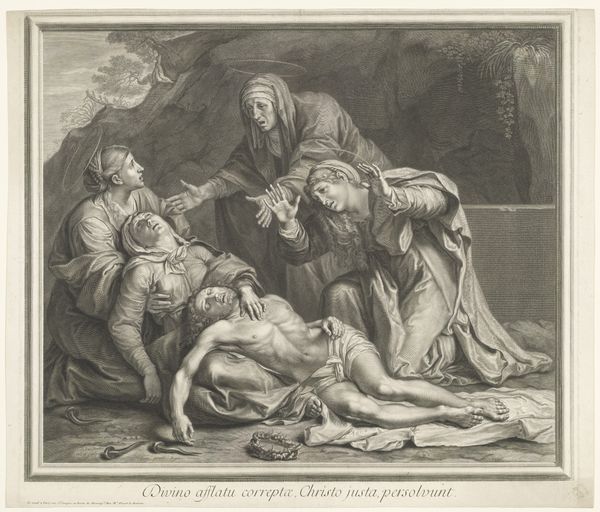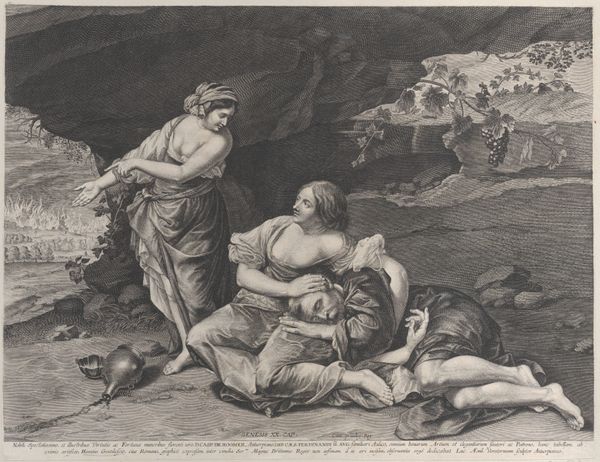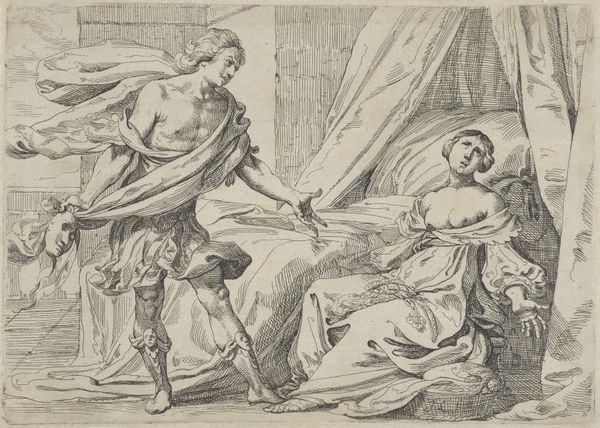
engraving
#
narrative-art
#
baroque
#
old engraving style
#
caricature
#
figuration
#
history-painting
#
engraving
Dimensions: height 358 mm, width 430 mm
Copyright: Rijks Museum: Open Domain
Curator: This is "Maria met het lichaam van Christus," or "Mary with the Body of Christ," an engraving from around 1640 to 1680, now housed here at the Rijksmuseum. It's attributed to Cornelis van Caukercken. The lines in this engraving, the textures... it's all so meticulously created. The density is also really high, and with very dramatic staging, it seems... Editor: It’s heartbreaking. You know, right away, it strikes you—Mary's face. Her complete surrender to grief. The angels almost smothering her, but in a caring way, like warmth. All the heavy, gray lines make me want to reach out to her, tell her everything will be all right when you know it absolutely won’t. Curator: Engravings like this, widely disseminated, acted as devotional aids, reinforcing religious narratives through readily accessible images. Consider the labor involved, the careful etching of the plate, the printing, and the subsequent distribution. It democratized access to religious iconography. Editor: It is interesting to know how this artwork was made. Yes, seeing it more as just art, there is a balance in it all too, isn't there? Christ’s muscular form, draped casually—if you can call death casual. And this, juxtaposed with the almost saccharine sentimentality of the cherubs hovering, really emphasizes how grief can exist in the sublime and mundane. It almost becomes an absurdity in this context, even the idea of comfort when there is none. Curator: Precisely. Van Caukercken is playing with the visual language of Baroque art while producing something intended for a broader, perhaps less refined, audience. How is this viewed? Is it a piece of craftsmanship, devotion, or marketing? Perhaps all. Editor: Yes, and that is it exactly; seeing an intimate view, or staged performance, in the engraver's skillful technique gives me even greater understanding. To be honest, sometimes, though, with religious pieces like this, a little skepticism, a nudge and wink at these Baroque-era cherubs, gets me through it. It might be what's in our present that influences us here now! Curator: It forces me to think about access, consumption, and the mechanics behind an artwork's societal impact, certainly things Van Caukercken thought a lot about when composing it. Editor: Exactly. And, me, more towards connecting a heart string with one here. Both of these, of course, make us closer and see this work in new perspectives.
Comments
No comments
Be the first to comment and join the conversation on the ultimate creative platform.
